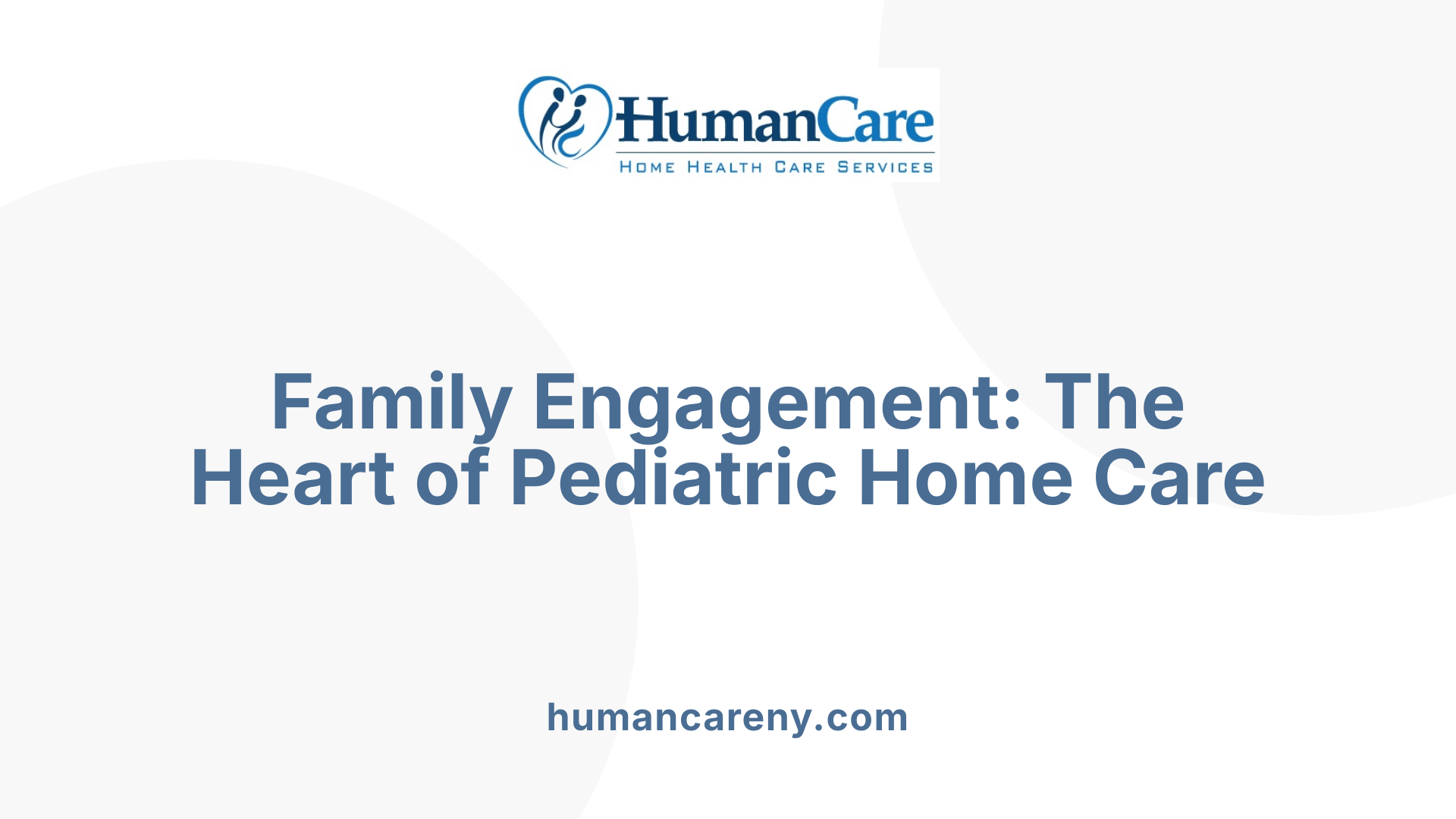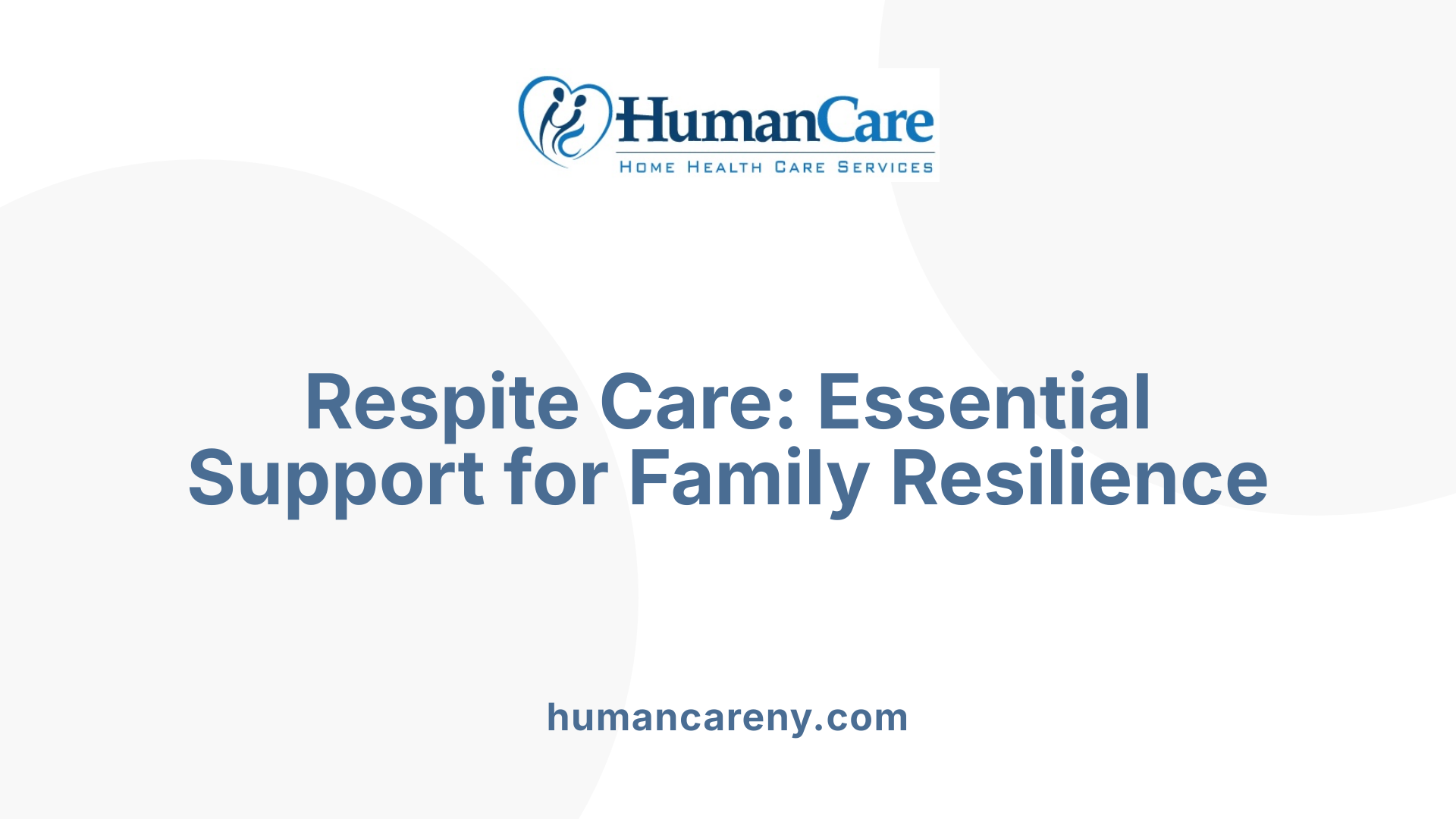The Vital Role of Families in Pediatric Home Care
Pediatric home care for medically fragile children is more than a healthcare delivery model; it is a collaborative partnership with families at its core. This approach not only supports children’s physical health but also nurtures emotional well-being and developmental progress. Understanding how family involvement enhances care outcomes reveals why in-home services are transforming pediatric healthcare.
Family Participation as the Cornerstone of Pediatric Home Health

What Role Does the Family Play in Pediatric Care Routines?
Family members are deeply involved in the daily care routines of medically fragile children receiving pediatric home health services. They carry out essential tasks such as administering medication, managing medical equipment like ventilators or feeding tubes, and following treatment plans developed collaboratively with healthcare providers. This close involvement helps ensure that care remains consistent and tailored to the child’s specific needs, which reinforces treatment effectiveness and promotes better health outcomes.
How Does Emotional Support from Family Benefit the Child?
Emotional support provided by family members plays a vital role in reducing anxiety and stress for children undergoing complex medical care at home. A familiar and loving environment fosters mental well-being, encouraging children to engage actively in their care routines and developmental activities. This emotional stability not only improves their quality of life but also supports cognitive and social growth.
What Are the Family’s Responsibilities Regarding Treatment Adherence?
Families are responsible for closely monitoring the child’s health condition, administering prescribed treatments on schedule, and recognizing signs that may require medical attention. Being vigilant and proactive allows for early detection of complications and timely intervention. Additionally, family members coordinate with healthcare teams to adjust care plans as needed, ensuring adherence and continuity.
In What Ways Do Families Advocate and Collaborate with Healthcare Providers?
Families act as advocates by communicating their child’s needs to pediatricians, therapists, social workers, and insurance providers. They work collaboratively to secure appropriate resources, navigate transitions such as hospital discharge or moving from pediatric to adult care, and tailor care plans to their family's unique circumstances. This partnership strengthens the quality and responsiveness of care, creating a holistic support system that benefits both the child and the family.
Training and Empowerment: Equipping Families for Complex Care
How are parents trained in medical tasks for pediatric home care?
Parents and caregivers receive specialized training to competently administer treatment plans, manage medications, and operate medical equipment used in the child's care. This training often includes hands-on instruction by nurses and therapists, focusing on procedures such as wound care, respiratory support, and feeding tube management. The goal is to equip families with the necessary skills to provide safe and effective care at home.
What education do families get on emergency response?
Emergency preparedness is a crucial component of family training. Caregivers learn how to recognize early signs of health complications and respond appropriately to emergencies. This may include CPR training, handling medical equipment alarms, and knowing when to seek urgent medical assistance. Early detection and timely intervention help reduce complications and ensure the child's safety.
How is specialized technology used at home, and what training is involved?
Many children with complex medical needs rely on technologies such as ventilators, feeding tubes, and monitoring devices. Families are educated on the operation, maintenance, and troubleshooting of these devices. This comprehensive training ensures that caregivers can maintain continuous support for the child's health needs and promptly address any technical issues.
How does family engagement influence health management?
By actively participating in care routines and decision-making, families become central members of the health management team. This engagement fosters collaboration with healthcare providers and improves adherence to care plans tailored to the child's unique needs. Trained families not only enhance the child's medical outcomes but also provide emotional stability and developmental support, creating a holistic care environment at home.
Collaborative Care Coordination: Families and Multidisciplinary Teams

What is the pediatrician’s role in care management?
The pediatrician acts as the central figure in managing a child's home health care. They provide direct medical care and serve as advocates for the child in securing insurance and social services. Their role also involves coordinating with specialists to ensure a comprehensive, tailored approach to the child's health needs.
How do multidisciplinary teams contribute?
A diverse team including registered nurses, therapists, social workers, and personal care aides collaborates to deliver personalized care. Each member brings expertise—nurses administer treatments, therapists support developmental goals, social workers connect families to community resources, and aides assist with daily living activities. This teamwork ensures that all aspects of the child's medical and developmental needs are addressed in a coordinated manner.
How is communication maintained between families and providers?
Effective communication is vital and is fostered through continuous family engagement. Families serve as communication facilitators by sharing observations and concerns, supporting emergency responses, and reinforcing care routines. Providers offer education and training to parents, empowering them to actively participate in health management. This partnership creates trust and responsiveness in care delivery.
How are care transitions and continuity of care managed?
Transitions, such as from hospital to home or pediatric to adult care, require comprehensive planning. The pediatrician and multidisciplinary team assess the child's stability, family preparedness, and home environment during discharge planning. Early planning for transitions ensures continuity by coordinating services, reviewing care plans regularly, and preparing caregivers for new responsibilities. This approach reduces complications and supports ongoing health and development.
| Role/Aspect | Description | Impact on Care |
|---|---|---|
| Pediatrician | Central care coordinator and advocate | Holistic, continuous management |
| Multidisciplinary Team | Nurses, therapists, social workers, aides | Comprehensive, personalized support |
| Family Communication | Education, training, active monitoring | Enhanced adherence and timely interventions |
| Care Transitions | Discharge planning, early transition preparation | Smooth continuity, reduced hospital stays |
This collaborative model strengthens the child's care network, blending clinical expertise with family insights to optimize health outcomes and well-being.
Tailoring Care Plans to Fit Family Needs and Home Environments

What Are Personalized Care Plans in Pediatric Home Health?
Personalized care plans are customized strategies designed to address each child's unique medical and developmental needs. These plans are crafted through collaboration between healthcare providers and the child's family, ensuring they reflect specific family preferences and lifestyle.
How Do Home Environment Adaptations Support Care?
Family involvement often includes creating a safe and functional home space tailored to the child's needs. Adaptations may involve arranging medical equipment like ventilators or feeding tubes, implementing safety measures, and organizing therapy areas to support daily routines effectively.
Why Is Inclusion of Family-Specific Needs Important?
Incorporating the family's routine, cultural values, and capacity into the care plan makes it more practical and achievable. This approach enhances the family's comfort with the treatment process and helps balance caregiving with their everyday lives.
What Is the Impact on Care Adherence and Practicality?
Care plans tailored to the family and home environment increase adherence to treatments by simplifying daily healthcare tasks and reducing stress. This improved practicality leads to better health outcomes and consistency in therapy, fostering a more holistic care experience.
Table: Elements of Tailored Pediatric Home Care Plans
| Element | Description | Effect on Care |
|---|---|---|
| Personalized Medical Goals | Align treatments with child's specific conditions | Ensures targeted and effective therapy |
| Home Adaptations | Modify environment for equipment and safety | Promotes ease of care and safety |
| Family Routines | Incorporate daily family schedules | Enhances adherence and reduces stress |
| Emotional & Cultural Needs | Respect family values and emotional support | Improves cooperation and well-being |
Tailoring pediatric home health care plans to meet family needs and environments is essential. Such customization supports practical care delivery, strengthens family participation, and ultimately improves the child's health and quality of life.
Emotional and Developmental Support Through Family Engagement
How does the family contribute to the child’s emotional stability?
Family involvement provides crucial emotional support that helps reduce anxiety and stress in medically fragile children. This supportive environment fosters better mental health and encourages children to engage actively in their care routines. The presence of loved ones offers comfort, which is essential during challenging medical treatments and health fluctuations.
In what ways is developmental therapy reinforced at home?
Families play an essential role in reinforcing gains made during therapy sessions by participating in developmental activities alongside the child. This continuous involvement supports cognitive, social, and motor skills development, making therapy efforts more effective and consistent. Engaging children in these activities within a familiar home environment promotes faster and sustained progress.
How does family engagement support mental health and reduce anxiety?
Emotional support from family members acts as a buffer against the mental health challenges often faced by children with complex medical needs. By offering reassurance and stability, family members help to alleviate feelings of isolation and fear, leading to improved emotional well-being and increased cooperation in treatment.
How are siblings and extended family involved in support?
Support for siblings and extended family is also an important aspect of holistic pediatric care. Services like sibling support groups and counseling help address the emotional needs of the entire family, ensuring a nurturing environment conducive to the child’s recovery and development. This also strengthens family resilience and shared caregiving responsibilities.
Overall, active family engagement creates a nurturing atmosphere that enhances emotional stability, supports developmental progress, and sustains mental health, benefiting both the child and the family unit.
Respite and Sustaining Family Well-being in Long-Term Care

What are respite care services?
Respite care services provide temporary relief to family caregivers who manage the daily medical and emotional needs of children with complex health conditions. These services allow families to take breaks, recharge, and attend to their personal needs without interruption to the child’s care.
How does respite care help build family resilience?
By offering caregivers time for rest and rejuvenation, respite care supports families in maintaining their physical and emotional health. This downtime strengthens their ability to continue providing compassionate and consistent care, fostering long-term resilience in managing the challenges of pediatric home health.
In what ways does respite care reduce caregiver stress?
Caregiving for medically fragile children is demanding and can lead to burnout. Respite care temporarily eases this burden, significantly reducing stress levels. Family members can recover from exhaustion, attend to other responsibilities, or seek social and emotional support, which improves overall family well-being.
How do families balance caregiving and family life?
Active participation in pediatric home health helps families tailor care routines that fit within daily life, but continuous caregiving can still be overwhelming. Incorporating respite care along with coordinated support from healthcare providers helps families maintain a healthy balance between caregiving duties and personal or family time. This balance promotes sustained caregiving and preserves family relationships and quality of life.
Community and Financial Support: Enhancing Family Capacity

Government Programs Supporting Pediatric Home Care
Families managing pediatric home care often face financial and logistical challenges. Several government initiatives help ease these burdens. Programs such as Supplemental Security Income (SSI), Community Care Programs (CCP), and Medicaid Developmental Disabilities Children's Programs (MDCP) provide financial aid and services that make home care more accessible and sustainable for children with complex medical needs.
Insurance Coverage and Cost Savings
Most insurance plans, including Medicaid, cover pediatric home health services, which significantly reduce direct costs for families. Home care not only cuts down on expensive hospital stays and long-term facility care but also prevents frequent hospitalizations by enabling early intervention and consistent treatment at home. This financial relief allows families to focus more on care quality and less on cost concerns.
Access to Community Resources and Support Groups
Community resources such as support groups, counseling services, and educational workshops offer families emotional support and practical advice. These networks help parents and caregivers navigate the complexities of pediatric care, share experiences, and learn coping strategies, ultimately improving family resilience and caregiving quality.
Advocacy for Comprehensive Services
Families often serve as advocates for their children's needs. Engaging with healthcare providers, social services, and insurance agencies ensures that children receive comprehensive, tailored care. Collaborating with multidisciplinary teams and community programs helps secure necessary resources, supports transitions in care, and fosters a holistic approach that benefits the entire family.
These financial and community supports are vital in empowering families to provide effective, compassionate care while maintaining their well-being and sustaining their caregiving efforts.
The Family-Centered Future of Pediatric Home Health
Pediatric home care exemplifies how healthcare can thrive through family involvement, combining clinical expertise with the unique insight and dedication families offer. This holistic, personalized approach not only improves health outcomes but enriches family life, reinforcing emotional bonds and enabling children to flourish in nurturing environments. As the model continues to evolve, fostering collaboration and providing resources for families will remain central to advancing care quality and accessibility.
References
- How Family Participation Improves Pediatric Home Health
- Everything You Need To Know About Pediatric Home Health
- Home Health Care of Children, Adolescents and Young ...
- The Benefits of In-Home Pediatric Care
- Unlocking the Benefits of Pediatric Home Health Services
- The Role of Pediatric Home Care in Family Support



